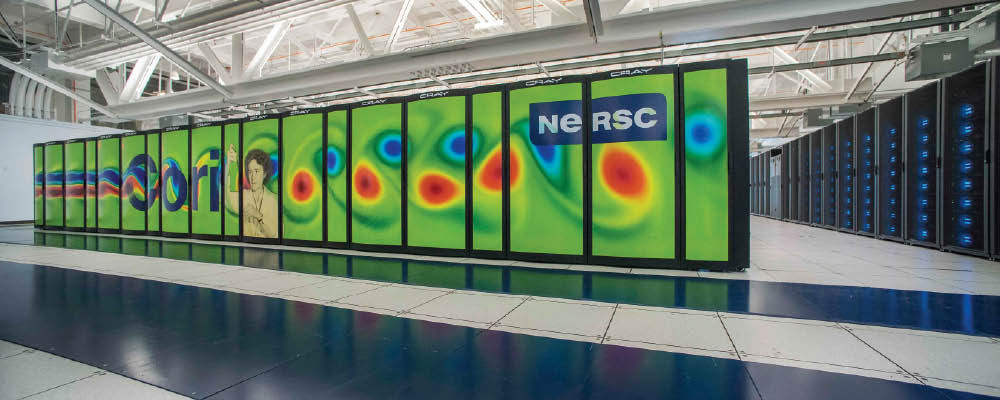National Energy Research Scientific Computing Center (NERSC)

Description
The National Energy Research Scientific Computing Center (NERSC), at Lawrence Berkeley National Laboratory, is the mission high performance scientific computing resource for researchers directly supported by the Department of Energy’s Office of Science (SC). NERSC traces its origins to the mid-1970s and has been upgraded regularly to keep pace with advances in computing technology. NERSC’s latest system is named NERSC-8, named “Cori” is a Cray XE6 that will have a peak theoretical performance of 30 thousand trillion calculations per second (30 petaflop/s). The system will begin to transition the broad DOE workload to more energy efficient architectures necessary to meet user requirements. NERSC offers scientists integrated computational and storage resources and provides in-depth support to users through consulting and partnerships, which empower them to be more effective researchers. With 5,800 users from universities, national laboratories and industry, NERSC supports a large and diverse research community. The NERSC workload represents the wide variety of research performed by its users, including simulations that run at the largest scales available on the center’s world-class supercomputers. In addition to capability calculations, data analysis of massive datasets are becoming increasingly important at NERSC in support of DOE SC experimental facilities.
Science
In 2015, over 750 research projects benefited from the high performance computing environment at NERSC. This past year numerical simulations run at NERSC helped UC Berkeley seismologists produce for the first time a 3D scan of Earth’s interior that conclusively connects plumes of hot rock rising through the mantle with surface hotspots that generate volcanic island chains like Hawaii, Samoa and Iceland. And in support of experimental facilities, the LUX dark matter experiment, which operates nearly a mile underground at the Sanford Underground Research Facility in South Dakota, ran simulations run on NERSC’s Edison supercomputer and along with improvements in the detector’s calibration, allowed scientists to test additional particle models of dark matter that now can be excluded from the search. A few of the many widely recognized breakthroughs and/or discoveries attributable to NERSC resources include: three of the Physics World’s top 10 breakthroughs of 2013 including observation of 28 extremely high-energy events that led to Physics World’s number one breakthrough of the year honoring IceCube South Pole Neutrino Observatory for making the first observations of high-energy cosmic-neutrinos; scientific simulations that supported the 2015, 2013 and 2007 Nobel Prize winning work; data analysis that caught Supernova 2011fe within hours of its explosion in 2011 so that telescopes around the world could be rapidly redirected to observe it; and development of a new approach to desalinate sea water using sheets of one- atom-thick grapheme that was Smithsonian Magazine’s fifth “Surprising Scientific Milestone of 2012”. NERSC resources also played an important role in one of Science Magazine’s Top Ten Breakthroughs of 2012 – the measurement of the ɵ13 weak mixing angle. NERSC resources continue to support DOE’s efforts to: understand photosynthesis; design more powerful and efficient particle accelerators, unravel the origins of the universe including the design and validation of world-class telescopes and satellites, and create an understanding of complex bioenergy systems.

